Don't wanna be here? Send us removal request.
Text
Mastering Google Ads for Maximum ROI
A deep dive into automated bidding strategies and audience targeting.
In 2025, Google Ads continues to be one of the most powerful tools for performance-driven marketers. With its vast reach, real-time analytics, and precision targeting, it offers endless potential—but only if used strategically. The real key to success? Mastering automated bidding and audience targeting to maximize ROI.
Whether you're a small business or a large enterprise, Google’s advertising ecosystem can be your growth engine. But to truly harness its power, you must blend machine learning with human insight.
At Graphixio, the best digital marketing agency in Dehradun, we’ve helped dozens of clients improve ad performance through smart strategies. Let’s dive deep into how you can do the same.
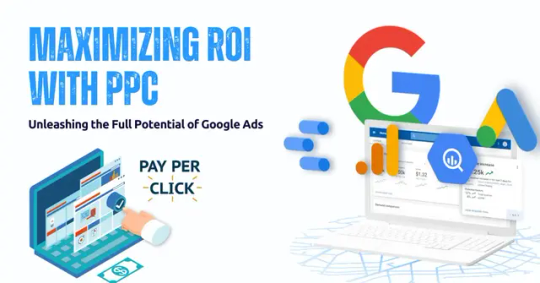
Why Google Ads Still Matters in 2025
Despite the rise of platforms like TikTok and LinkedIn Ads, Google Ads remains indispensable for results-driven marketers. It offers immediate visibility, measurable outcomes, and scalable options for any budget. Google’s ever-improving algorithm, coupled with user behavior data, ensures your ads are served to the right person at the right time.
But Google Ads in 2025 isn’t about guesswork. It’s about intelligent automation—where machine learning fine-tunes your bidding, and audience signals steer your message directly to likely converters.
To make the most of this opportunity, businesses must blend data science with creativity—something the team at Graphixio specializes in.
Automated Bidding: Smarter Spend for Smarter Returns
Gone are the days of manually adjusting keyword bids every hour. Google’s Smart Bidding allows advertisers to leverage real-time signals such as location, device, time, and even past behavior to optimize for conversions.
The most powerful Smart Bidding strategies include:
Target CPA (Cost Per Acquisition) – Best for lead generation
Target ROAS (Return on Ad Spend) – Ideal for eCommerce
Maximize Conversions – Drive the most actions within your budget
Maximize Clicks – Great for visibility and traffic goals
Enhanced CPC – Combines manual and automated bidding for flexibility
Choosing the right bidding strategy depends on your business goals. For instance, a SaaS company may focus on CPA, while a D2C brand might prioritize ROAS.
Partnering with an experienced PPC team like Graphixio ensures your bid strategies are aligned with business outcomes, not just clicks.
Audience Targeting: The Key to Precision Marketing
Even the best ads can fail if they’re shown to the wrong audience. Google Ads offers a comprehensive suite of audience targeting options, allowing advertisers to tailor their message based on user intent and behavior.
The most effective targeting types include:
In-Market Audiences: Users actively researching products or services.
Affinity Audiences: People with a demonstrated interest in specific topics.
Custom Segments: Build your audience based on search behavior, websites visited, or app usage.
Remarketing: Re-engage users who’ve visited your website.
Customer Match: Use first-party data (emails, phone numbers) to target known customers across Google properties.
When paired with Smart Bidding, these audience layers ensure that your ads reach not just more people—but the right people.
At Graphixio, our data-driven experts integrate targeting with creative ad copy and landing page design for optimal ROI.
The Role of Ad Creatives and Landing Pages
Even with automated bidding and hyper-targeting, your ad is only as strong as its creative. Responsive Search Ads allow marketers to test multiple headlines and descriptions, which Google automatically combines and displays based on performance.
Effective ad copy in 2025 should:
Focus on benefits, not features.
Include emotional and urgency triggers (e.g., “Limited Time Offer”).
Clearly communicate the value proposition.
Have a compelling CTA (e.g., “Buy Now”, “Get a Free Demo”).
But the journey doesn’t end at the click. Your landing pages must load fast, be mobile-optimized, and match the ad’s promise. Poor UX can destroy even the most expensive ad campaigns.
Our website development team at Graphixio builds custom landing pages that increase conversions and reduce bounce rates, making every ad dollar count.
Integrating SEO and PPC for Holistic Results
PPC and SEO are often treated as separate strategies, but together, they can deliver synergistic results. For example:
Use top-performing organic keywords to shape PPC campaigns.
Run paid ads on keywords that are difficult to rank for organically.
Retarget SEO traffic with display or search ads.
At Graphixio, we specialize in full-funnel integration—connecting your content marketing and social media marketing efforts with PPC to drive consistent engagement.
Measuring ROI: Don’t Just Track Clicks
Many businesses make the mistake of focusing on vanity metrics like impressions or clicks. Instead, measure what really matters:
Cost per conversion
Conversion rate
Revenue per click
Customer lifetime value (CLV)
Leverage Google Ads’ robust reporting, or set up advanced tracking with tools like GA4 and Google Tag Manager. If your campaign isn’t generating a return, your strategy needs to change—not your budget.
Graphixio’s performance team continuously optimizes your campaigns based on conversion insights, not guesswork.
Final Thoughts
Mastering Google Ads in 2025 means embracing automation, precision targeting, and data-driven decision-making. The tools are more powerful than ever—but success depends on using them correctly. If you're ready to elevate your advertising strategy, trust the experts at Graphixio—your go-to best digital marketing agency in Dehradun.
We offer comprehensive support across PPC, SEO, content marketing, social media marketing, and website design—to ensure every click leads to real ROI.
#digital marketing#seo#marketing#contentmarketing#socialmediamarketing#seo agency#ads#seo company#seo marketing#on page seo
0 notes
Text
Shoppable Social Media: Turning Engagement into Instant Transactions
Integrating e-commerce directly into platforms like Instagram, TikTok, and YouTube.
Social media is no longer just a place for likes and follows—it’s now a full-blown storefront. Welcome to the era of shoppable social media, where platforms like Instagram, TikTok, and YouTube are turning engagement into instant purchases. With a single swipe, tap, or click, consumers are buying products without ever leaving their favorite apps.
This merging of content and commerce is revolutionizing digital marketing, blurring the lines between inspiration and transaction. For brands looking to capitalize on impulse buying and fast decision-making, shoppable social media is the future—and it’s already here.

The Rise of Shoppable Social Platforms
Instagram was one of the first platforms to introduce native shopping features. Today, users can browse tagged products in posts, explore curated shop tabs, and check out directly within the app. TikTok soon followed with live shopping, product stickers in videos, and affiliate partnerships with influencers. YouTube now supports in-video product tags and live commerce integrations.
This seamless shopping experience shortens the buyer’s journey dramatically—consumers go from discovery to checkout in seconds. For brands, this is a golden opportunity to convert content views into sales instantly.
To succeed in this environment, a solid digital marketing strategy is essential—one that merges storytelling with commerce and emotion with data.
Why Shoppable Social Media Matters in 2025
In an era of reduced attention spans, convenience wins. Shoppable content eliminates friction from the buyer journey, meeting consumers where they already spend their time. Studies show that over 70% of Gen Z and Millennials prefer to discover and shop products directly through social apps.
This shift gives brands access to a highly engaged audience ready to act on impulse. Instead of redirecting users to an external website, you can close the sale right in the app. It’s not just fast—it’s personal.
At Graphixio, we help brands craft performance-driven social media marketing campaigns that turn passive engagement into real revenue.
Influencer Power + Social Shopping = Higher Conversions
Influencers have always been a crucial part of social media marketing, but now, they’re also critical salespeople. With tools like TikTok Shop or Instagram’s product tagging, influencers can directly showcase and sell your products to their followers.
This type of content marketing feels more authentic and trustworthy than traditional ads. It’s peer-driven, entertaining, and personalized. When paired with shoppable tools, it becomes an engine for conversions.
If you’re ready to tap into influencer-driven commerce, Graphixio’s content marketing services can help you identify creators, develop sponsored content, and integrate your store for a seamless shopping experience.
Optimizing Your Product Listings for Social Discovery
To succeed in shoppable social commerce, your product listings must be optimized visually and strategically. High-quality images, short-form videos, and user-generated content can make or break the shopping experience. But visuals aren’t everything—descriptions matter too.
Make sure your product captions include searchable terms and emotional triggers. This not only enhances discoverability but also connects with your audience on a deeper level. Combine this with optimized hashtags and call-to-actions like “Tap to Shop” or “Link in Bio.”
Need help making your product feed algorithm- and user-friendly? Our SEO experts at Graphixio can optimize your listings and social profiles to boost visibility and conversions.
Driving Traffic with Paid Ads
While organic reach still plays a role, social commerce success often hinges on smart ad targeting. Platforms like Meta Ads Manager and TikTok Ads offer advanced targeting based on behavior, interests, and engagement. Use pay-per-click (PPC) strategies to promote your top products, retarget cart abandoners, or push time-sensitive offers.
Ensure your creatives match the platform's native aesthetic. For example, Instagram Stories require vertical formats with engaging visuals, while TikTok demands storytelling in under 60 seconds.
Let Graphixio run your PPC campaigns optimized for in-app conversions, making every click count—right from the first scroll to checkout.
Integrated Website and Social Commerce
Although social platforms now offer native shopping, your website still plays a key role. Syncing your online store with Facebook Shops, Instagram Shopping, or YouTube’s product listings ensures a unified experience.
Platforms like Shopify, WooCommerce, and BigCommerce support social commerce plugins that allow you to manage inventory, pricing, and analytics in one dashboard. Additionally, your site should reflect the same style and branding as your social content to maintain consistency.
If your website isn’t ready for shoppable integrations, Graphixio’s website development team can help bridge the gap—ensuring your eCommerce journey is as smooth as your social one.
Measuring Success: Metrics That Matter
Tracking performance is key. Beyond likes and comments, look at conversion rates, average order value, click-through rates, and time spent on shoppable content. Social commerce analytics can reveal what types of content drive the most sales, allowing you to refine your strategy.
Use UTM parameters, platform insights, and customer journey mapping to understand what’s working—and what’s not. A/B test different formats, influencers, and creatives regularly.
Graphixio helps you dig into the data behind your digital marketing efforts, turning insights into action with real-time dashboards and campaign optimization.
The Future of Shopping Is Social
Shoppable social media is not a fleeting trend—it’s the evolution of e-commerce. Brands that blend content, convenience, and community will own the future of digital retail.
With Graphixio, the best digital marketing agency in Dehradun, you get end-to-end expertise in SEO, content marketing, PPC, social media marketing, and website development. We help you turn scrolling into sales and followers into customers—one tap at a time.
#digital marketing#seo#marketing#contentmarketing#socialmediamarketing#seo agency#ads#seo company#seo marketing#on page seo
0 notes
Text
Sustainable Marketing
Strategies for promoting green products and building ethical brand loyalty.
In 2025, sustainability isn’t just a trend—it’s a necessity. As global awareness about climate change, pollution, and resource scarcity grows, consumers are making more conscious choices about the brands they support. This shift is driving companies to embrace sustainable marketing, aligning campaigns with environmental and ethical values to build deeper, long-term connections with their audiences.
At its core, sustainable marketing involves more than just promoting eco-friendly products. It means reshaping a brand’s entire marketing strategy to reflect honesty, transparency, and purpose. For businesses that want to stay relevant, it’s crucial to adapt to this new era of value-driven digital marketing.
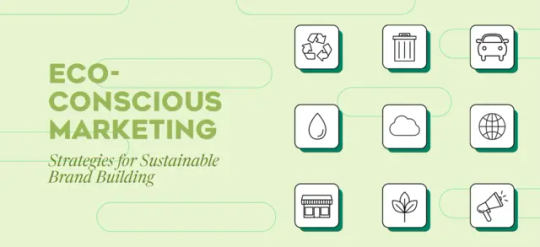
Why Sustainable Marketing Matters
Today’s consumers—especially Gen Z and Millennials—are more likely to buy from brands that share their values. According to recent studies, over 70% of customers prefer companies that prioritize sustainability. From packaging and production to advertising and brand messaging, every touchpoint matters.
Companies leveraging content marketing to highlight their sustainable initiatives are seeing better engagement and trust. Transparent stories about green manufacturing, reduced carbon footprints, and ethical labor practices speak louder than flashy promotions.
Partner with Graphixio, your go-to digital marketing agency in Dehradun, to craft meaningful campaigns that align with your audience’s eco-conscious values.
Building Authenticity Through Content
Authenticity is at the heart of sustainable marketing. Rather than greenwashing—making misleading claims about sustainability—brands need to back up their promises with real data and results. This is where thoughtful content marketing comes in.
From educational blog posts to behind-the-scenes videos and sustainability reports, content helps communicate your efforts honestly. Showcasing green packaging, recycling initiatives, or your partnerships with eco-friendly suppliers helps customers feel aligned with your mission.
Looking to scale your message ethically? Our content marketing services at Graphixio are tailored to highlight your brand’s sustainability journey with clarity and integrity.
Leveraging SEO for Green Messaging
Being sustainable is great—but are people finding your eco-friendly products online? That’s where SEO becomes critical. By optimizing your site with keywords like “eco-conscious,” “green products,” and “sustainable alternatives,” you attract users actively searching for these values.
Local SEO is also essential. If you’re a green brand in a specific area, using geo-targeted SEO ensures your efforts resonate with the right community. For example, highlighting “eco-friendly stores in Dehradun” can help you rank better for nearby searches.
Let our SEO experts at Graphixio help optimize your site and content around sustainability-focused queries that bring conscious customers directly to your website.
Sustainable PPC: Low-Impact, High-Efficiency Ads
While traditional advertising can sometimes be seen as intrusive, pay-per-click (PPC) campaigns, when done responsibly, can deliver precise, value-aligned messaging. Use PPC to promote sustainable product lines, special eco-campaigns, or green pledges.
Ensure your ad copy emphasizes ethics, sustainability, and long-term value—not just discounts. This positions your brand as responsible and mission-driven. Use extensions to link to your brand’s sustainability page, impact metrics, or donation programs.
Ready to run a campaign with a cause? Explore PPC services that align with your environmental values at Graphixio.
Social Media: Driving Green Engagement
Social media marketing plays a vital role in amplifying your sustainability story. From Earth Day campaigns to Instagram Reels showcasing recyclable packaging or ethical sourcing, platforms like Instagram, LinkedIn, and Facebook are ideal for community-driven content.
Social listening can help you understand what environmental issues matter most to your audience. Tailor your messaging to reflect those values. Use hashtags like #SustainableLiving, #EcoFriendlyBrand, and #GreenBusiness to extend your reach organically.
With our social media marketing services, Graphixio can help your brand lead the conversation on sustainability, encouraging followers to make more ethical choices.
Building Long-Term Loyalty
Sustainable marketing isn’t about one-time campaigns—it’s about cultivating trust over time. Offer loyalty programs that reward green behavior (like recycling or bulk purchases). Share impact statistics regularly. Show your audience how their purchases contribute to a better planet.
Transparency builds credibility. Share your wins and your challenges. Whether you're switching to solar-powered production or reducing plastic use, your honesty fosters trust and loyalty.
And with the help of a professional digital marketing strategy from the best digital marketing agency in Dehradun, you can maintain long-term engagement that goes beyond the transaction.
Sustainable Design and UX
Even your website should reflect your green values. Sustainable design means more than minimal aesthetics—it includes fast-loading pages, optimized images, and intuitive navigation, reducing digital energy consumption and improving the user experience.
A clean, accessible, and responsive website demonstrates your commitment to both the user and the environment. Our website development experts at Graphixio specialize in building eco-conscious digital experiences that convert.
Final Thoughts
Sustainable marketing isn’t just good ethics—it’s good business. In a market where consumers demand accountability, brands that embrace transparency and eco-conscious practices are winning loyalty, trust, and long-term success.
By aligning your digital marketing strategy with environmental values and ethical storytelling, you create meaningful impact—both for your audience and the planet.
At Graphixio, we combine cutting-edge SEO, content marketing, PPC, social media marketing, and website strategies to help brands build sustainable growth that matters.
#digital marketing#seo#marketing#contentmarketing#socialmediamarketing#seo agency#ads#seo company#seo marketing#on page seo
0 notes
Text
Hyperlocal Targeting with Geo-Fencing and Mobile Marketing
Reaching Users with Timely Offers Based on Their Exact Physical Location
In today’s fast-paced digital landscape, brands are constantly seeking new ways to reach their audience more effectively. Enter hyperlocal targeting—a strategy that leverages geo-fencing and mobile marketing to deliver real-time, location-specific offers and ads. With the widespread adoption of smartphones, this technique has proven to be incredibly efficient in grabbing attention, driving foot traffic, and boosting conversions.
Hyperlocal marketing isn’t just about showing ads to people near your store. It’s about crafting personalized, timely experiences that resonate deeply with local audiences. As users become more mobile and tech-savvy, brands must capitalize on this behavior shift with the help of tools like geo-fencing, beacons, and AI-powered analytics.
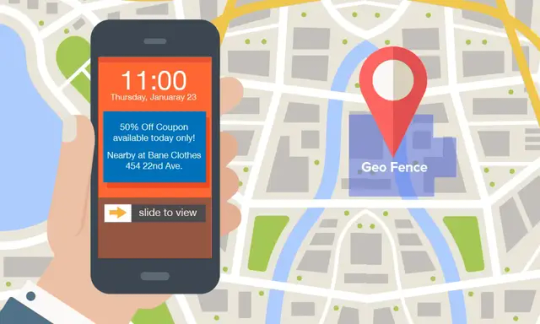
What Is Hyperlocal Targeting?
Hyperlocal targeting is a form of digital marketing that focuses on delivering content or promotions to users within a highly specific geographic area—often as precise as a single city block or store radius. By using GPS, Wi-Fi, RFID, and Bluetooth technologies, marketers can set up “geo-fences” that trigger ads or notifications once a potential customer enters the defined location.
This real-time engagement boosts relevance, enhances user experience, and increases the likelihood of conversion. For example, a coffee shop can push a mobile coupon to someone walking nearby during morning rush hour.
Geo-Fencing: The Core of Location-Based Marketing
Geo-fencing works by creating a virtual boundary around a specific location. When a user’s device enters or exits this boundary, an action is triggered—typically a push notification, SMS, or display ad.
This technology pairs exceptionally well with mobile marketing, allowing brands to serve hyper-personalized ads based on a user’s exact position. Geo-fencing has already proven effective in industries like retail, real estate, restaurants, and even healthcare.
Role of Mobile Marketing in Local Engagement
Mobile marketing plays a pivotal role in delivering these hyperlocal experiences. With users spending more time on their smartphones than ever before, reaching them through mobile apps, SMS, or web push notifications ensures higher engagement.
Combining geo-fencing with social media marketing allows businesses to further amplify their reach. For instance, a store can run a localized ad on Facebook or Instagram targeting users who have recently been in the area. This layered approach boosts visibility and enhances conversion potential.
At Graphixio, we specialize in leveraging mobile marketing and social media marketing tools to create geo-targeted campaigns that truly resonate with local audiences.
Benefits of Hyperlocal Targeting for Businesses
Higher Engagement Rates – Delivering timely offers based on a user’s location increases the chance of engagement.
Better ROI – You spend marketing dollars more efficiently by targeting only high-intent users.
Enhanced Customer Experience – Personalized, relevant content creates a sense of connection.
Increased Foot Traffic – Retailers and local businesses can drive real-time visits to their physical locations.
Integrating AI with Hyperlocal Marketing
Artificial Intelligence (AI) takes hyperlocal targeting to a whole new level. AI can analyze location data, behavior, and preferences to predict when and where a user is most likely to respond to a promotion. Combining AI with geo-fencing allows marketers to deliver the right message at the perfect moment.
These advancements go hand-in-hand with content marketing efforts. For instance, a blog or video embedded with a call-to-action can be shown to users within a specific area, increasing relevance and click-through rates.
For brands looking to merge hyperlocal strategy with smart content creation, Graphixio’s content marketing services offer AI-backed solutions tailored to your audience's location and intent.
The Role of PPC in Geo-Fenced Campaigns
Paid advertising is also evolving to accommodate hyperlocal strategies. Platforms like Google Ads now allow location targeting and bid adjustments based on proximity to a physical store.
This makes PPC campaigns more precise and effective. By focusing your ad spend on users who are physically near your location, you can achieve better conversions and higher ROI.
Looking to elevate your local paid campaigns? Our PPC services at Graphixio help you create high-converting, geo-targeted ads that align with your brand goals.
Geo-Fencing for Websites and Local SEO
Your website should also be optimized to support your hyperlocal strategy. Local landing pages, mobile responsiveness, and map integrations play a huge role in helping nearby users find and engage with your business.
Additionally, integrating location-specific keywords into your SEO strategy helps you rank higher for "near me" searches. At Graphixio, we combine SEO best practices with hyperlocal tactics to ensure your business gets found when it matters most.
Need a complete solution? Our team is ready to craft a mobile-first, geo-targeted web presence that drives results. Check out our website services to learn more.
Final Thoughts
Hyperlocal targeting through geo-fencing and mobile marketing is redefining how brands connect with customers. In a world where timing and relevance are everything, delivering real-time offers to users based on their exact location can significantly enhance engagement and conversions.
At Graphixio, the best digital marketing agency in Dehradun, we empower businesses with cutting-edge location-based strategies that combine SEO, content marketing, PPC, mobile marketing, and social media marketing to reach the right people at the right time.
#digital marketing#seo#marketing#contentmarketing#socialmediamarketing#seo agency#seo company#ads#seo marketing#on page seo
0 notes
Text
Generative AI and Content Creation
Striking the Balance Between Automation and Authenticity
In 2025, Generative AI is no longer a novelty—it's a necessity in content creation. With tools like ChatGPT revolutionizing how brands generate articles, scripts, and visual assets, the line between machine-made and human-created content is blurring. But with this innovation comes a pressing question: How do businesses balance automation with authenticity?

The Rise of Generative AI in Content Marketing
The content marketing landscape has undergone a radical transformation. AI-powered tools are now capable of generating high-quality blogs, product descriptions, video scripts, and even personalized email content within seconds. This has drastically improved productivity and lowered costs for many businesses.
Brands leveraging content marketing can now publish at scale, catering to a global audience faster than ever. Yet, while quantity has become easier to achieve, quality and emotional resonance remain crucial differentiators.
Authenticity Is the New Currency
While AI tools can mimic tone, structure, and even emotion, they often fall short of replicating human nuance and storytelling. That's why authenticity continues to dominate in digital marketing. Users crave connection, and content that feels too robotic may actually harm engagement.
The challenge is to use AI as a content assistant rather than a full-time creator. For example, a human writer could use AI to draft a blog outline or generate meta descriptions, but final storytelling should be curated with human experience and empathy.
Personalization Through AI
When used wisely, AI enables highly targeted content delivery. By analyzing user behavior and preferences, AI can help craft personalized experiences that improve conversion rates. This is especially powerful in PPC campaigns and automated email sequences.
Moreover, combining AI with SEO strategies can uncover trending keywords, optimal publishing times, and competitor insights—giving your content a significant edge.
Maintaining a Human Touch on Every Platform
Your content lives on multiple platforms: websites, social media, emails, and more. A cross-platform strategy that leverages AI must maintain a consistent human voice. In social media marketing, for example, AI-generated posts can save time, but spontaneous, culture-aware posts still resonate most.
To achieve this, companies are building hybrid teams—marketers, writers, and data scientists working alongside AI tools to ensure that the final output is both efficient and emotionally engaging.
Ethical Considerations and Transparency
One of the biggest concerns with generative AI is transparency. If readers can't distinguish between human and machine-written content, trust may erode. Brands must be transparent about how they use AI in their content creation processes. Adding a disclaimer or tag like "AI-assisted content" can help build credibility.
At the same time, ethical practices in digital marketing agency in Dehradun services like those offered by Graphixio include responsible AI use, ensuring that content is inclusive, accurate, and aligned with brand values.
Graphixio’s Approach to AI-Enhanced Content
As the best digital marketing agency in Dehradun, Graphixio embraces the power of AI without losing sight of human creativity. We use AI tools to streamline processes and gather insights, but our content creation remains rooted in authentic storytelling and strategy.
Whether it’s website development, PPC optimization, or full-fledged content marketing campaigns, our goal is to deliver content that converts and connects.
#digital marketing#seo#marketing#contentmarketing#socialmediamarketing#seo agency#ads#seo company#seo marketing#on page seo
0 notes
Text
Conversational Commerce and Marketing
Selling via Chatbots and AI Assistants
In an era where attention spans are short and instant gratification is expected, conversational commerce is rapidly reshaping how brands interact with consumers. The fusion of AI-powered chatbots and real-time messaging has transformed digital shopping into a highly personalized, efficient, and interactive experience.
This trend is not just enhancing user engagement—it’s also redefining how brands approach digital marketing, social media marketing, and content marketing. In 2025, consumers expect brands to be always-on, responsive, and relevant. Conversational tools are the bridge to meeting those expectations.
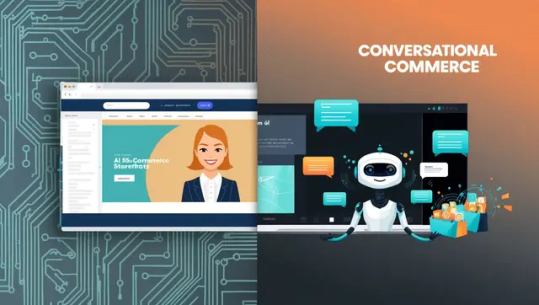
What Is Conversational Commerce?
Conversational commerce refers to the use of messaging platforms, voice assistants, and chatbots to facilitate shopping and customer service experiences. Whether it’s answering product queries, assisting with checkouts, or providing post-sale support, chat-based and voice-based interfaces are doing it all.
Tools like WhatsApp Business, Facebook Messenger bots, and even Siri and Alexa now enable brands to engage customers across their website and apps. These touchpoints are not just functional—they’re strategic, playing a critical role in the customer journey.
The Benefits of Conversational Marketing
Conversational marketing is built on real-time communication, personalization, and convenience. It eliminates the need for forms, wait times, and complicated navigation. Instead, it lets users engage in natural, fluid conversations—just like they would with a human salesperson.
Here’s how brands benefit:
Improved Conversion Rates: Chatbots can nudge users to make purchases instantly, reducing drop-offs.
Better Customer Insights: Each chat interaction offers valuable first-party data for retargeting.
Higher Engagement: Real-time responses keep users active longer on your platform.
Increased Personalization: Bots and assistants can tailor conversations based on behavior and preferences.
Integrated into your SEO strategy, conversational tools also help reduce bounce rates and increase dwell time, boosting overall site rankings.
Chatbots as Virtual Sales Agents
Today’s AI chatbots are capable of far more than scripted replies. Thanks to machine learning and NLP (Natural Language Processing), bots can understand context, intent, and sentiment—allowing for dynamic, human-like conversations.
These bots can:
Provide personalized product recommendations
Guide users through the checkout process
Handle post-sale support like tracking and returns
Recover abandoned carts with timely nudges
By integrating chatbots on landing pages or within PPC campaigns, brands can immediately engage leads without waiting for manual intervention.
Voice Assistants and the Rise of Voice Search
Another growing frontier in conversational commerce is voice-enabled marketing. As smart speakers and voice assistants become more widespread, consumers are now making inquiries and purchases through spoken commands.
Optimizing for voice search is no longer optional—it’s a necessity. By aligning your SEO content with how users speak rather than type, you increase your chances of being the first result they hear.
Moreover, brands are integrating voice assistants into their mobile apps and e-commerce platforms to enable voice navigation, product searches, and even checkout—a strategy that delivers both speed and novelty.
Integrating Conversational Commerce with Social Media
Messaging platforms like WhatsApp, Instagram DMs, and Facebook Messenger are where much of the action is happening. These apps are being transformed into sales channels through direct chat options, AI integrations, and smart automations.
By combining social media marketing with conversational commerce, brands can:
Respond instantly to product inquiries from stories or ads
Guide followers to personalized offers via DM
Send automated follow-ups, promotions, and reminders
This integration allows for seamless movement from ad discovery to purchase, often within the same app.
Conversational Data as Fuel for Content & Personalization
Each chat interaction is an opportunity to collect first-party data ethically and use it to enhance future engagement. Brands are increasingly using conversational data to refine their content marketing efforts, adjust targeting, and personalize recommendations.
For example, if a user frequently asks about vegan skincare, your chatbot can tag them for vegan product updates, email campaigns, and exclusive offers—all without cookies or intrusive tracking.
This approach builds trust, delivers value, and improves loyalty in a privacy-first digital world.
Ethical Use and Transparency
While conversational tools offer immense benefits, it’s crucial to remain transparent with users. Make it clear when they’re chatting with a bot, offer easy opt-outs, and ensure that all data usage complies with regulations.
Working with the best digital marketing agency in Dehradun ensures your strategies stay both cutting-edge and compliant.
Final Thoughts
Conversational commerce isn’t just a new tool in your marketing stack—it’s the evolution of how we sell, serve, and connect with customers. By embracing chatbots and AI assistants, businesses can engage users instantly, drive more meaningful interactions, and guide customers from awareness to conversion with ease.
Incorporating these tools into your digital marketing, SEO, and PPC strategies positions your brand to meet modern expectations and outpace competitors.
If you're looking to harness the full potential of conversational marketing, let Graphixio help you create tailored experiences that drive real results.
#seo#digital marketing#marketing#contentmarketing#socialmediamarketing#seo agency#ads#seo company#seo marketing#on page seo
0 notes
Text
Marketing in the Metaverse
Strategies Beyond Virtual Reality
The digital age continues to evolve, and one of the most revolutionary frontiers for brands is the metaverse. This immersive, 3D virtual world is redefining the way businesses engage with consumers, blending entertainment, interaction, and commerce into seamless experiences. In 2025, marketing in the metaverse is no longer a concept for the future—it’s a vital strategy for forward-thinking brands looking to deepen connections, build loyalty, and amplify visibility.
With interactive virtual storefronts, gamified advertising, and fully immersive brand experiences, the metaverse presents a new kind of opportunity—and challenge—for modern digital marketing.
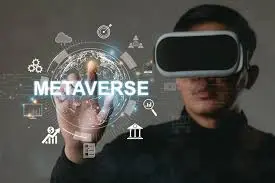
Understanding the Metaverse Marketing Landscape
The metaverse refers to interconnected, persistent virtual worlds where users interact via digital avatars. Platforms like Decentraland, Roblox, and Meta Horizon Worlds are already allowing users to socialize, attend events, shop, and play in 3D environments. For marketers, this means shifting focus from flat, passive content to immersive, interactive engagement.
To stay ahead, businesses must adapt their digital marketing strategies to meet users where they are—across headsets, AR-enabled mobile devices, and connected virtual worlds.
Immersive Brand Experiences
One of the greatest advantages of the metaverse is the ability to create immersive experiences that engage users on a deeper level. Rather than relying solely on static ads, brands can create interactive environments where users can explore, participate, and transact.
Major brands like Nike, Samsung, and Gucci have already launched virtual showrooms and branded experiences. These allow users to “walk through” product displays, customize virtual apparel, and even attend live concerts—all from the comfort of home.
Pairing these experiences with strong content marketing ensures that the brand message travels across platforms, extending reach and engagement.
Digital Storefronts and Virtual Commerce
Virtual storefronts are the next evolution in e-commerce. In the metaverse, brands can set up 3D retail spaces where users interact with products using avatars, ask questions, and make purchases using crypto or fiat currencies.
These virtual shops go beyond selling—they offer immersive product education, demos, and storytelling opportunities. Combined with effective SEO, they can also improve discoverability in the next generation of search platforms.
This convergence of experience and commerce creates a powerful advantage for businesses, especially when supported by a robust website optimized for metaverse interactions.
Gamification and User Engagement
The metaverse thrives on gamification. Brands that incorporate games, challenges, and reward-based systems into their marketing can significantly boost user engagement and time spent with their content.
Consider quests that reward users with branded NFTs, or loyalty points earned by exploring a virtual store. These strategies convert passive viewers into active brand participants, turning fun into ROI.
Integrating these elements with social media marketing extends the reach of these campaigns and encourages user-generated content that fuels organic growth.
NFTs and Virtual Assets
Non-fungible tokens (NFTs) are another cornerstone of metaverse marketing. Brands can offer NFTs as limited-edition collectibles, virtual merchandise, or event access passes, generating buzz and exclusivity.
This model not only builds hype but creates an emotional connection with the audience. It also enables a new monetization channel, powered by blockchain and aligned with privacy-forward, user-owned data.
When paired with PPC strategies, NFTs can act as entry points to deeper brand ecosystems, making paid ads feel more like exclusive offers than interruptions.
Cross-Platform Integration
The metaverse isn’t isolated—it integrates seamlessly with other marketing channels. Brands can create a virtual event, record clips, and share them via Instagram, YouTube, or TikTok to amplify their reach.
This strategy turns a single metaverse activation into a cross-channel campaign, making content marketing even more powerful. Repurposing content from immersive environments into blog posts, social content, and paid ads increases ROI and reinforces brand messaging across every touchpoint.
Privacy, Ethics, and Data Ownership
As with all evolving technology, ethical concerns in the metaverse are growing. Privacy, consent, and data protection are paramount. Consumers now expect full transparency and control over their digital identities and behavior.
The metaverse also changes how we collect and use user data. Traditional cookies are irrelevant in decentralized spaces, which makes privacy-first marketing and user-permissioned data collection critical.
Partnering with the best digital marketing agency in Dehradun like Graphixio ensures your metaverse strategy remains not only effective but also ethical and legally compliant.
Getting Started with Metaverse Marketing
Brands looking to enter the metaverse should:
Build or partner to create immersive virtual spaces.
Launch NFT-based loyalty or engagement programs.
Integrate social media marketing to promote metaverse campaigns.
Use AR/VR content as a gateway to deeper experiences.
Optimize digital assets using SEO and rich metadata.
The metaverse rewards creativity, consistency, and user-centric thinking. With the right approach, it can become a powerful pillar of your brand's digital marketing strategy.
Conclusion
Marketing in the metaverse is more than a trend—it’s a shift in how brands and consumers interact. As immersive environments and virtual commerce gain traction, businesses must innovate to remain competitive.
Whether you're launching a branded world, selling NFTs, or hosting virtual product demos, metaverse marketing offers a bold new canvas for creativity and connection.
Want to build immersive brand experiences that convert? Partner with Graphixio—the best digital marketing agency in Dehradun—for strategic guidance and full-service execution across the digital universe.
#digital marketing#seo#marketing#contentmarketing#socialmediamarketing#seo agency#ads#seo company#seo marketing#on page seo
0 notes
Text
The Power of Digital Twins in Marketing
Simulating Customer Journeys Before Launch
In 2025, one of the most transformative forces in digital marketing isn’t just automation or AI — it’s Digital Twins. Originally developed for engineering and manufacturing, digital twins are now revolutionizing how brands map, test, and optimize customer journeys. Imagine being able to simulate a user’s full experience with your brand — from their first click to final purchase — before launching a campaign. That’s the power of this technology.
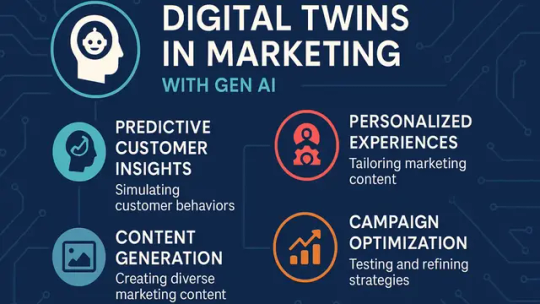
What Are Digital Twins?
A digital twin is a virtual model of a real-world entity — in this case, your ideal customer or a segment of your audience. These models are built from massive sets of behavioral, demographic, and contextual data, allowing marketers to simulate real-time interactions and anticipate outcomes. Paired with AI and machine learning, digital twins are a goldmine for optimizing everything from content marketing to UX design and conversion funnels.
Why Are Marketers Using Digital Twins?
Traditional marketing relies on A/B testing and historical data. Digital twins take it a step further by enabling real-time simulation. Before spending budget on PPC ads or email campaigns, you can see how different segments of your audience are likely to respond. This predictive modeling saves time, reduces costs, and increases ROI.
For example, a brand might test a landing page design using a digital twin of their Gen Z segment. They can measure scroll depth, engagement, and drop-off points before ever launching the page publicly. This insight ensures the page performs optimally across devices and demographics.
Enhancing Personalization and User Experience
With a detailed understanding of how users navigate content, marketers can personalize their approach like never before. This is especially powerful in social media marketing, where micro-targeted content drives better engagement.
Imagine running a campaign that uses a digital twin to simulate a user’s journey through your website. You can identify exactly where to place CTAs, how to design mobile-first navigation, and which headlines convert better — all before publishing anything live.
Impact on SEO and Content Strategy
Digital twins help you understand which content performs best for specific audience profiles. This insight shapes your SEO strategy by allowing you to create more targeted, intent-driven content.
Instead of guessing what keywords or content formats will resonate, your digital twin simulation tells you directly. Combine this with semantic search optimization and you’re not just chasing traffic — you’re building content that genuinely aligns with user needs.
Integration with Other Digital Tools
Digital twins don’t work in isolation. They integrate seamlessly with CRM systems, ad platforms, analytics tools, and even marketing automation software. When paired with digital marketing services like AI-powered customer segmentation and email automation, you get a 360-degree view of how campaigns will perform in various scenarios.
This makes digital twins particularly effective for brands managing multi-channel marketing — ensuring consistency across web, mobile, smart devices, and even AR/VR platforms.
Future-Proofing Your Marketing Strategy
In a world moving toward privacy-first advertising and cookieless tracking, predictive insights and simulated journeys offer a powerful alternative. Digital twins empower marketers to make data-backed decisions while respecting user privacy. They also align perfectly with the rising demand for hyper-personalized experiences that feel organic rather than intrusive.
As the metaverse, wearables, and connected IoT ecosystems evolve, the ability to simulate journeys across these touchpoints will become a competitive edge. Brands that embrace digital twins now will be better equipped for a cross-device, real-time future.
Conclusion
Digital twins aren’t just a futuristic concept — they’re here, and they’re reshaping the way we approach digital marketing, content marketing, and customer engagement. By simulating user behavior before launch, businesses gain a massive strategic advantage.
At Graphixio, we’re not just adapting to this future — we’re building it. As the best digital marketing agency in Dehradun, we leverage cutting-edge technologies like digital twins to create smarter, data-driven campaigns that deliver real results.
#digital marketing#seo#marketing#contentmarketing#socialmediamarketing#seo agency#ads#seo company#seo marketing#on page seo
0 notes
Text
Predictive Analytics in Digital Marketing
Forecasting Customer Behavior with Precision
In the ever-evolving landscape of digital marketing, the ability to understand and anticipate customer behavior is becoming the ultimate competitive edge. As we step deeper into 2025, predictive analytics is no longer a buzzword but a core strategy embraced by forward-thinking brands to drive smarter campaigns, optimize performance, and enhance ROI.
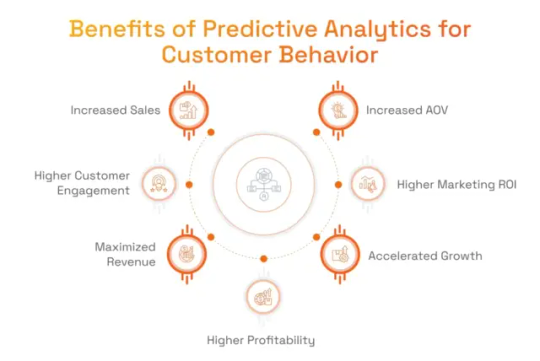
What is Predictive Analytics in Digital Marketing?
Predictive analytics involves using AI and machine learning algorithms to analyze existing data, forecast future behavior, and inform marketing strategies. By evaluating user interactions, demographics, and historical trends, marketers can tailor their messaging to meet customers where they are—both physically and emotionally—at just the right moment.
This is transforming how brands approach everything from content marketing to PPC, customer retention, and acquisition.
Key Applications of Predictive Analytics in 2025
1. Smart Customer Segmentation
With predictive tools, marketers can move beyond basic demographics and segment audiences based on likely behaviors, such as future purchases or churn risk. This enhances the effectiveness of email marketing, social media marketing campaigns, and website experiences.
2. Personalized Recommendations
Just like Netflix or Amazon, brands now use predictive algorithms to offer hyper-personalized content and product suggestions. This not only increases conversion rates but also boosts customer satisfaction.
3. Optimized Ad Spending
Rather than guessing where to allocate budget, predictive analytics enables precise targeting of users most likely to convert. This makes your PPC campaigns more efficient and cost-effective.
4. Churn Prediction and Retention
Identifying customers who are likely to leave and implementing tailored retention strategies is now simpler. This is especially crucial for SaaS and subscription-based businesses.
Tools Powering Predictive Analytics
Platforms like Google Analytics 4, HubSpot, Salesforce, and custom AI models are enabling marketers to mine insights from massive datasets. Integrating these with CRM systems allows for real-time decision-making and action.
Benefits of Predictive Analytics for Digital Marketers
Enhanced ROI from better-targeted campaigns
Improved customer experiences through personalization
Faster decision-making based on real-time data
Competitive advantage by staying ahead of trends
Predictive Analytics and SEO
Data is also driving modern SEO strategies. From forecasting keyword trends to understanding user search intent, predictive tools are helping brands fine-tune their digital marketing strategies for better visibility and engagement.
Future Outlook
As data collection becomes more sophisticated and AI evolves, predictive analytics will shift from being a helpful tool to an indispensable pillar of every successful digital marketing agency in Dehradun and beyond.
Conclusion
The precision of predictive analytics empowers brands to transform customer insights into strategic action. Whether through social media marketing, content marketing, PPC, or SEO, forecasting behavior is the key to unlocking deeper engagement and long-term success.
At Graphixio, we deliver future-ready digital marketing services that incorporate the latest in AI-driven analytics. Partner with the best digital marketing agency in Dehradun to take your brand to the next level.
#digital marketing#seo#marketing#contentmarketing#socialmediamarketing#seo agency#ads#seo company#seo marketing#on page seo
0 notes
Text
AI-Powered Email Marketing in 2025: Smarter Campaigns, Better Conversions
In 2025, the world of email marketing is undergoing a revolution, powered by artificial intelligence (AI) and machine learning. As inboxes become more crowded and consumer expectations rise, marketers are turning to AI-powered personalization and automation to create smarter campaigns and drive higher conversions. With tools that can analyze vast datasets in seconds, predict user behavior, and craft hyper-personalized messages, email marketing is no longer about mass mailing—it’s about meaningful engagement.

The Role of AI in Modern Email Marketing
AI is reshaping how digital marketers design, execute, and refine their email campaigns. Traditional segmentation based on age, gender, or location has evolved into micro-segmentation fueled by behavioral data, search history, and previous interactions.
Platforms now use AI to:
Analyze user engagement patterns
Predict the best times to send emails
Craft subject lines that resonate with individual recipients
Suggest products based on user behavior
Automate A/B testing for higher open and click-through rates
This level of hyper-personalization not only increases user satisfaction but also significantly boosts conversion rates.
Smart Automation Enhancing Campaign Delivery
Modern email marketing platforms integrate AI for full automation of campaign workflows. This includes:
Real-time responses to user actions
Automatically generated content
Dynamic email templates based on user segments
For instance, if a customer abandons a shopping cart, an AI system can automatically send a personalized follow-up email offering a discount. This reduces human effort and ensures timely communication.
AI also supports predictive analytics, enabling marketers to forecast user behavior and tailor their messaging accordingly. This smart targeting is crucial for brands using content marketing and PPC strategies to support their email efforts.
Better Integration with Digital Marketing Strategies
Email is no longer a standalone channel. It is tightly integrated with broader digital marketing ecosystems, including social media marketing, SEO, and web analytics. AI helps unify data from these platforms to create more cohesive, relevant campaigns.
At Graphixio, we understand that effective email marketing is part of a larger strategy. Our team integrates email, content marketing, and social media marketing into a seamless experience that drives traffic and boosts engagement across platforms. Our approach combines SEO insights with AI-enhanced email content to reach the right audience at the right time.
Real-Time Personalization with AI
Thanks to AI, personalization happens in real time. This means:
Emails adapt based on time zone, local events, and user behavior
Real-time product recommendations
Language and tone adjustments based on prior engagement
This level of personalization leads to deeper relationships between brands and consumers, particularly when paired with a well-designed website that encourages user action.
Enhanced User Journeys and Funnel Optimization
AI makes it easier to guide users through complex buyer journeys by anticipating their needs. Instead of blasting generic messages, marketers can now nurture leads using:
Personalized onboarding sequences
Retargeting based on behavior
Lifecycle-triggered emails
By combining AI with PPC and SEO, brands can direct traffic to landing pages tailored to individual preferences. This enhances the user experience and shortens the conversion funnel.
Why AI Email Marketing Is the Future
The benefits of using AI in email campaigns include:
Increased ROI
Higher engagement and open rates
Reduced manual effort
Better compliance with data privacy regulations
As consumers expect more personalized experiences, AI-powered email marketing stands out as one of the most effective ways to meet these expectations while scaling your efforts.
Conclusion
AI-powered email marketing in 2025 is all about delivering the right message to the right person at the right time—automatically. By integrating AI into your email workflows, you can boost engagement, build stronger relationships, and increase your marketing ROI.
If you're looking to future-proof your campaigns, trust Graphixio, the best digital marketing agency in Dehradun. We provide comprehensive digital marketing, content marketing, PPC, social media marketing, and SEO solutions to grow your brand.
#digital marketing#seo#marketing#contentmarketing#socialmediamarketing#seo agency#ads#seo marketing#seo company#on page seo
0 notes
Text
The Rise of Programmatic Audio Ads
Leveraging Streaming Services and Podcasts for Smarter Targeting
In an age where voice content dominates earbuds and car stereos, audio advertising is experiencing a renaissance. With the explosion of streaming services and podcast platforms, brands are finding new, innovative ways to connect with audiences through programmatic audio ads. This shift isn’t just about where ads are placed, but how they are delivered—intelligently, in real time, and with precision.
At Graphixio, the best digital marketing agency in Dehradun, we’re helping brands tap into the power of audio by merging programmatic technologies with targeted storytelling. Whether you're running a PPC campaign or building a long-term content marketing strategy, audio deserves a seat at the table.

What Is Programmatic Audio?
Programmatic audio is the automated buying and selling of audio ad inventory using data and algorithms. This allows advertisers to place their ads on streaming music platforms like Spotify, podcast networks, internet radio, and even voice assistant environments—all with user-level targeting similar to social media marketing or SEO-based campaigns.
What makes programmatic audio stand out is its ability to deliver the right message at the right time, often during intimate, distraction-free moments when the listener is highly engaged.
Why Audio? Why Now?
With people spending more time on-the-go and multitasking, audio provides a unique channel where visuals can't compete. According to recent studies, over 70% of listeners say audio ads enhance their connection to a brand. This means advertisers can tap into deep engagement and build trust over time.
Also, the rise of smart speakers, wearable devices, and in-car infotainment systems opens up even more real estate for digital marketing campaigns.
Benefits of Programmatic Audio Ads
Targeting Precision: Use listener behavior, location, device type, and even mood to serve highly relevant ads.
Cross-Device Reach: Coordinate campaigns across mobile, desktop, and smart speakers.
Personalized Creative: Serve different ads to different audience segments, in real-time.
Better ROI: With programmatic bidding, you only pay for impressions that meet your criteria, much like in PPC.
Integrating Audio into Your Digital Strategy
At Graphixio, we recommend blending programmatic audio into a broader digital marketing mix. Here's how:
Combine with SEO: Promote podcasts or audio blogs that boost domain authority and visibility on search engines. Explore our SEO services.
Amplify Content Marketing: Convert blogs into audio versions, run branded podcasts, and repurpose spoken content to reach new audiences. Learn more through our content marketing services.
Reinforce Social Media Campaigns: Use snippets from podcasts or music collaborations in your social media marketing ads.
The Future of Programmatic Audio
As voice and audio continue to dominate content consumption habits, we predict exponential growth in audio ad formats, especially dynamic creatives that adjust messaging based on weather, location, or behavior.
Even better? With cookieless tracking becoming the norm, audio platforms that rely on first-party data from logins (like Spotify or Pandora) offer a privacy-compliant solution that doesn't sacrifice targeting power.
Final Thoughts
The future of audio advertising is now, and it’s smart, scalable, and emotionally resonant. If your brand isn’t already exploring programmatic audio, it’s time to plug in. At Graphixio, we craft data-driven, sound-rich campaigns that speak directly to your audience, wherever they are.
0 notes
Text
The Evolution of Retargeting: Post-Cookie Tactics That Actually Work
New ways to re-engage users with minimal data
The end of third-party cookies has reshaped how brands approach retargeting. Once a cornerstone of digital marketing strategies, cookie-based tracking is no longer viable on most browsers, forcing marketers to rethink how they reconnect with potential customers. In this new era, retargeting must balance personalization, privacy, and performance—all with reduced access to user data.
The good news? Retargeting isn’t dead. It’s evolving. And at Graphixio—the best digital marketing agency in Dehradun—we’re helping brands thrive with future-proof, cookie-less approaches that actually work.
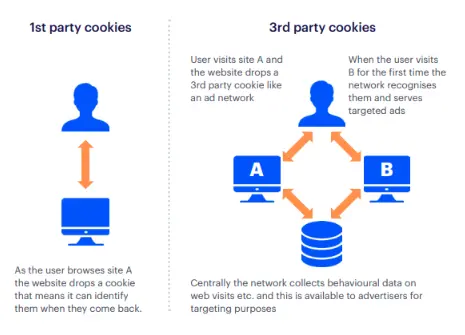
Why Traditional Retargeting Is Fading Out
Until recently, websites relied on third-party cookies to track user behavior and serve relevant ads across the web. But growing concerns over user privacy—reflected in regulations like GDPR, CCPA, and browser changes from Apple and Google—have limited access to such tracking tools.
This seismic shift has affected not just PPC campaigns, but also social media marketing strategies that once leveraged behavioral data for laser-targeted ads. Now, marketers must build retargeting systems based on transparency and consent.
The Rise of First-Party Data
To adapt, brands are doubling down on first-party data—information they collect directly from users via websites, apps, and emails. This shift empowers marketers to design retargeting strategies rooted in trust and user intent.
By integrating first-party data into CRMs and customer data platforms (CDPs), businesses can run intelligent content marketing and SEO campaigns that guide users through the buyer journey without relying on third-party tracking.
Post-Cookie Retargeting Strategies That Actually Work
1. Contextual Targeting
Instead of tracking behavior, contextual advertising targets users based on the content they’re viewing in the moment. For example, if someone is reading a blog about DSLR photography, you can serve ads for camera accessories—without needing any personal data.
This tactic blends well with both PPC and display advertising and is increasingly favored by privacy-conscious platforms like YouTube and Pinterest.
2. Email and SMS-Based Retargeting
With robust first-party data, you can retarget users via personalized email and SMS campaigns. These channels allow you to re-engage customers with tailored offers, abandoned cart reminders, and follow-up content—all while staying compliant with privacy laws.
Combining SMS with social media marketing campaigns (like Facebook Custom Audiences based on email lists) creates a powerful, multi-channel funnel.
3. Remarketing Lists for Search Ads (RLSA)
RLSAs are a Google Ads feature that lets you customize search ads for users who have previously visited your website. While cookie support may change, logged-in Google users and first-party signals still offer viable ways to retarget based on search intent.
With well-optimized SEO and search ads, you can win back high-intent users in the research phase of their journey.
4. On-Site Personalization
Even without cookies, tools like session-based personalization and behavioral segmentation can help deliver a unique on-site experience. For instance:
Highlighting previously viewed products
Showing dynamic banners based on location or referral source
Delivering personalized content based on time on site
These techniques work exceptionally well when backed by strategic content marketing and smart design on your website.
5. Clean Room Collaboration
Some brands are partnering with platforms like Google or retail media networks using secure data clean rooms. These environments enable anonymized data matching and retargeting, giving brands visibility into cross-platform activity without violating privacy laws.
We covered this in detail in our blog on Data Clean Rooms, a must-read for modern marketers looking for ethical solutions in 2025.
6. Interactive Content and Lead Capture
Instead of retargeting based on behavior, many marketers are now using quizzes, polls, and gated content to engage users and collect intent-rich data at the source. This approach feeds clean, compliant user profiles that can be used for personalized retargeting via email, ads, or social.
Platforms like Instagram Stories, LinkedIn Lead Gen Forms, and even chatbots are excellent tools for interactive data capture.
Building Retargeting into Your Full-Funnel Strategy
Successful retargeting in 2025 doesn’t exist in isolation. It’s part of a larger, consent-based funnel that blends:
High-quality content driven by SEO
Social storytelling powered by social media marketing
Lead nurturing using email and automation
Conversion-focused PPC ads
Data consolidation on your website or CDP
At Graphixio, our experts build full-funnel strategies that use ethical, intelligent retargeting to re-engage users at every step of the customer journey.
Future Outlook: Retargeting in a Cookieless World
As we move forward, marketers must focus on trust, transparency, and value creation. If users feel your brand respects their privacy and delivers personalized value in return, they’re far more likely to stay engaged.
Retargeting isn’t about stalking users anymore—it’s about understanding them. And that begins with better data practices and smarter messaging.
Whether you’re in ecommerce, SaaS, education, or real estate, the post-cookie world demands a rethink of your digital strategy. That’s where Graphixio—your go-to digital marketing agency in Dehradun—comes in.
#digital marketing#seo#marketing#contentmarketing#socialmediamarketing#seo agency#ads#seo marketing#seo company
0 notes
Text
Data Clean Rooms: The Future of Privacy-First Advertising
How marketers are sharing insights across platforms without violating privacy laws
As data privacy regulations tighten and third-party cookies crumble, advertisers face an unprecedented challenge: how to target users effectively while respecting their privacy. Enter Data Clean Rooms, a groundbreaking solution enabling secure collaboration between brands, publishers, and platforms. In 2025, clean rooms are becoming the new standard for digital marketing professionals focused on ethical, data-driven growth.
Rather than sharing raw user data, clean rooms allow parties to match and analyze datasets in a secure environment—without ever exposing personally identifiable information (PII). This enables advertisers to draw powerful insights for PPC and audience targeting, while remaining compliant with GDPR, CCPA, and emerging global privacy laws.
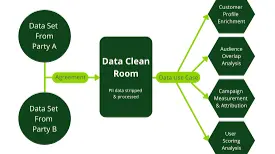
The Rise of Privacy-First Advertising
With increased consumer demand for privacy and tech giants like Apple and Google cracking down on data tracking, the best digital marketing agencies in Dehradun are shifting towards solutions that protect user identities. Clean rooms represent a privacy-safe haven where brands can derive insights, measure campaign performance, and even model lookalike audiences—without breaching compliance.
Unlike data marketplaces or DMPs, clean rooms use encrypted first-party data and often rely on differential privacy or anonymization techniques. This makes them the perfect balance between personalization and protection.
How Data Clean Rooms Work
In simple terms, a data clean room is a walled-off environment where multiple parties can upload data sets and run joint analyses without accessing each other’s raw data. The process typically involves:
Each party encrypting and uploading their first-party data
Running permission-based queries on the aggregated dataset
Deriving audience insights or campaign measurement results
Extracting anonymized insights—never actual user data
This secure method is transforming how brands personalize their content marketing, refine their PPC strategies, and enhance user targeting—all while staying compliant.
Benefits for Digital Marketers
The advantages of data clean rooms extend across nearly every aspect of modern digital marketing:
Privacy Compliance – Stay on the right side of GDPR, CCPA, and global laws.
Better Attribution – Understand true ROI by linking ad exposure to conversion across platforms.
Improved Targeting – Build high-performing segments with data unions.
Smarter Retargeting – Use predictive analytics without exposing identities.
Secure Collaboration – Work with publishers and ad tech partners safely.
Applications in PPC and Social Media
When running PPC campaigns on platforms like Google, Meta, or Amazon, marketers often struggle with cross-platform attribution. Clean rooms solve this by linking first-party web activity with platform-side ad impressions—delivering a more complete performance picture.
In social media marketing, clean rooms help you identify which ads drive engagement without needing invasive tracking. Brands can securely analyze likes, shares, and clicks against CRM data, gaining deep insights into content performance.
Impact on Content Strategy and SEO
Even content marketing benefits from clean room insights. Marketers can see which types of content perform best among overlapping audiences across platforms, and tailor strategies accordingly. By blending SEO and anonymized behavior data, you can refine topics, formats, and targeting.
SEO-driven content can also be optimized based on clean room insights around bounce rates, dwell time, or engagement—helping content rank better while also converting effectively.
Clean Rooms and the Future of First-Party Data
As third-party cookies fade out, first-party data is becoming the cornerstone of smart marketing. Clean rooms empower brands to use their first-party data more meaningfully, while also gaining from partnerships with retailers, publishers, or data providers.
Retail media networks, for example, now commonly use clean rooms to offer advertisers access to shopper data—enabling hyper-targeted campaigns within privacy-compliant environments.
Getting Started with Data Clean Rooms
Implementing a clean room strategy requires collaboration between your marketing, legal, and tech teams. Here's how to begin:
Audit your first-party data and clean up legacy records.
Choose a clean room provider (e.g., Google Ads Data Hub, Snowflake, Infosum).
Align KPIs with clean room capabilities—focus on what insights you truly need.
Collaborate with strategic partners for enriched insights.
Ensure privacy policies and user consents are updated and transparent.
Working with the right partner is crucial to unlock clean room potential—especially for websites handling high volumes of data across different regions.
Graphixio: Leading the Privacy-First Marketing Revolution
At Graphixio, we stay at the forefront of innovation by helping brands integrate privacy-first strategies like data clean rooms. Whether you need help with SEO, PPC, content marketing, or social media marketing, our team ensures your campaigns are both high-performing and fully compliant.
As the best digital marketing agency in Dehradun, we help future-proof your strategies in the age of data privacy.
0 notes
Text
Subscription Models and Digital Marketing: Turning One-Time Buyers into Lifelong Customers
The marketing playbook for SaaS, memberships, and recurring sales
In 2025, the rise of the subscription economy continues to transform how brands approach customer relationships. No longer limited to magazines or streaming services, subscription models have become the standard across SaaS platforms, eCommerce, memberships, and more. With the right digital marketing strategy, businesses can convert one-time transactions into lifelong customer value.
At the heart of this shift lies a powerful opportunity: building predictable, recurring revenue by offering consistent value over time. Whether you're a software provider or a D2C brand with a replenishment model, success hinges on a deep understanding of your audience and how to retain them through personalized, ongoing engagement.
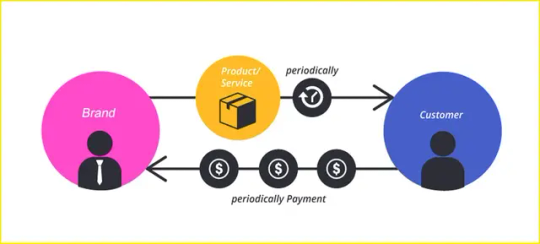
The Digital Shift to Subscriptions
Subscription models thrive on long-term relationships. Unlike single purchases, these models depend on trust, convenience, and ongoing satisfaction. And that means your website, messaging, and funnel strategies must all work toward a unified goal: retention.
From onboarding flows to loyalty emails, the digital experience must feel seamless. For this, content marketing plays a critical role. It keeps your brand top-of-mind and reinforces value regularly. Educational blogs, onboarding tutorials, newsletters, and product updates help subscribers remain engaged—and less likely to churn.
Role of SEO in Subscription Growth
Strong SEO is the foundation for visibility, especially when acquiring subscription customers. Targeting long-tail keywords like “best skincare subscription boxes” or “cloud storage for freelancers” allows you to connect with ready-to-buy users.
Moreover, optimizing your landing pages with user-first copy, trust signals, FAQs, and reviews builds credibility while driving organic sign-ups. Since subscription models benefit from recurring value, you must also optimize for post-purchase queries such as “how to use,” “manage subscription,” and “cancel” to maintain transparency and user confidence.
Social Media Marketing for Subscriber Engagement
Social media marketing helps humanize your subscription offering. It's not just about acquisition — it's about keeping your audience engaged between billings. Brands that succeed in this space provide entertaining, helpful, and community-driven content.
Behind-the-scenes posts, unboxing videos, influencer partnerships, and member-only previews can create excitement and FOMO. Platforms like Instagram and TikTok are ideal for sparking loyalty and emotional connections with subscribers, while Facebook groups and Discord channels build a sense of belonging.
Smart Retargeting and PPC for Recurring Sales
Subscription-based businesses benefit from PPC and retargeting ads that nurture long-term interest. Rather than a one-click sale, your goal is to remind users of the ongoing value they’ll receive.
PPC ads can promote free trials, limited-time offers, or highlight testimonials from satisfied customers. Retargeting campaigns should reinforce benefits, address concerns, and offer easy re-engagement. Don’t just retarget abandoned carts—retarget users who paused, downgraded, or showed browsing interest in premium tiers.
Personalization and Lifecycle Marketing
Modern subscribers expect personalization at every stage of their journey. AI-driven platforms now make it easier to analyze user behavior and deliver curated content that aligns with their interests.
Through dynamic content marketing, brands can guide users from free trials to premium plans, or from first box to year-long commitment. Subscription lifecycle marketing includes:
Welcome series to onboard
Re-engagement emails for dormant users
Upsell campaigns targeting power users
Feedback loops to gather insights and adjust
All of this requires synchronized, omnichannel messaging — from email to push notifications to SMS.
Metrics That Matter for Subscription Models
Digital marketing teams must track more than just acquisition. Metrics like:
Customer Lifetime Value (CLV)
Churn Rate
Average Revenue Per User (ARPU)
Activation Rate
...are critical in assessing the health of your subscription strategy. Using tools like Google Analytics, CRM data, and predictive analytics platforms helps in identifying friction points and growth opportunities.
The Graphixio Advantage
Subscription success doesn’t happen by chance. It requires a strategic blend of SEO, PPC, social media marketing, and customer-centric content marketing. That’s where Graphixio comes in.
As the best digital marketing agency in Dehradun, we help SaaS brands, eCommerce startups, and D2C businesses craft scalable subscription strategies that convert, retain, and grow.
#digital marketing#seo#marketing#contentmarketing#socialmediamarketing#seo agency#ads#seo marketing#seo company#on page seo
0 notes
Text
Micro-Moments Marketing: Winning Instant Decisions in 2025
In today’s hyper-connected world, consumers don’t plan their online journeys — they act on impulse. These spontaneous touchpoints, known as micro-moments, are redefining the way marketers engage with their audiences. In 2025, these intent-driven moments are more important than ever for brands looking to gain real-time relevance and influence.
Micro-moments are those brief instances when users reflexively turn to their devices for quick answers — “I want to know,” “I want to go,” “I want to buy,” and “I want to do.” Recognizing and responding to these micro-moments with relevant content is key to successful digital marketing.
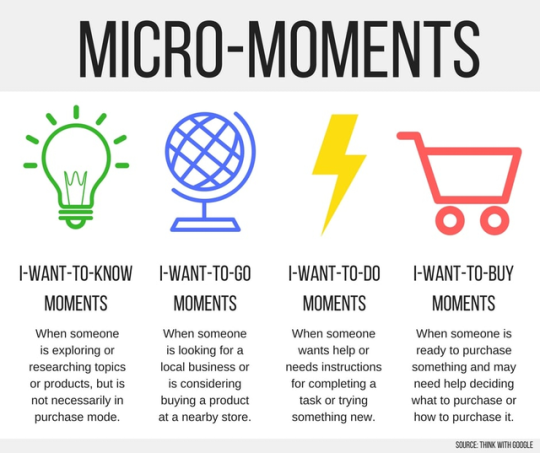
The Rise of Intent-Driven Marketing
Consumer journeys are no longer linear. Micro-moments break them down into dozens of real-time decision points. Brands must now anticipate and meet consumer needs instantly. By aligning content with search intent and using behavior-based targeting, businesses can increase engagement, build trust, and drive conversions.
This shift emphasizes the importance of robust SEO and fast-loading, mobile-optimized websites. Speed, clarity, and relevance are critical when you have just seconds to capture a consumer’s attention.
Why Micro-Moments Matter in 2025
In 2025, mobile usage and smart devices dominate, making micro-moments even more frequent. Voice search, wearables, and smart home assistants have trained consumers to expect immediate, accurate answers. Brands that can deliver value in real time earn loyalty and win the sale.
From a strategic standpoint, identifying high-intent keywords and using them in content marketing helps brands show up at the right time, with the right message. Search engines now reward content that satisfies real human needs, not just algorithmic checklists.
Optimizing for Micro-Moments with Content and SEO
To win micro-moments, brands must craft content that is:
Concise – answers questions instantly
Location-aware – customized for local relevance
Actionable – includes CTAs that guide next steps
Incorporating structured data, FAQs, and featured snippet strategies enhances your visibility. This is especially important for SEO in 2025, where search engines prioritize user-first content.
Real-Time Engagement via Social and PPC
Micro-moments aren’t just about organic content. Paid advertising plays a huge role in seizing intent. Through PPC campaigns, businesses can bid on high-intent keywords and deliver contextually relevant ads the moment a user searches.
Meanwhile, social media marketing platforms are crucial for creating quick interactions. Features like shoppable posts, story ads, and live Q&A sessions allow brands to respond instantly — turning casual interest into immediate action.
Website Performance and UX Still Rule
Your website must be built for speed and clarity. Slow or clunky user experiences are the fastest way to lose a potential customer during a micro-moment. Every second counts.
Enhance usability by using:
Mobile-first responsive design
One-click navigation
Smart search functionality
Sticky CTAs
Providing an excellent digital experience isn’t optional — it’s the baseline for micro-moment success.
Predictive Analytics and AI-Powered Personalization
AI is now an essential tool in capturing and converting micro-moments. Predictive analytics helps marketers forecast user behavior, enabling brands to present the right content before a consumer even searches.
AI-driven tools also personalize messaging across platforms, tailoring offers, headlines, and creatives based on user preferences. This tech-powered personalization is a game changer for proactive digital marketing agencies in Dehradun looking to stay ahead.
The Future of Micro-Moment Marketing
As we head further into 2025, micro-moments will only increase in frequency and significance. Brands that prioritize speed, relevance, and emotional resonance will outperform those stuck in the old funnel-based mindset.
This approach demands a cross-channel strategy that includes strong content marketing, adaptive PPC, and agile social media marketing — all backed by a high-performing website optimized for both user experience and search.
Conclusion
Micro-moments are the battleground for modern marketers. Winning them requires a blend of technology, speed, and genuine customer insight. At Graphixio, the best digital marketing agency in Dehradun, we specialize in crafting micro-moment strategies that align perfectly with your audience’s intent. Let us help you be there when it matters most.
#digital marketing#seo#marketing#contentmarketing#socialmediamarketing#seo agency#ads#seo marketing#seo company
0 notes
Text
Neuromarketing Trends in 2025: Understanding Consumer Brains to Boost Conversions
In 2025, neuromarketing has evolved from a buzzword to a data-driven powerhouse influencing everything from ad design to UX. By tapping into cognitive science and emotional triggers, brands can now create more personalized, engaging, and conversion-optimized experiences. The goal? Not just to sell, but to resonate.
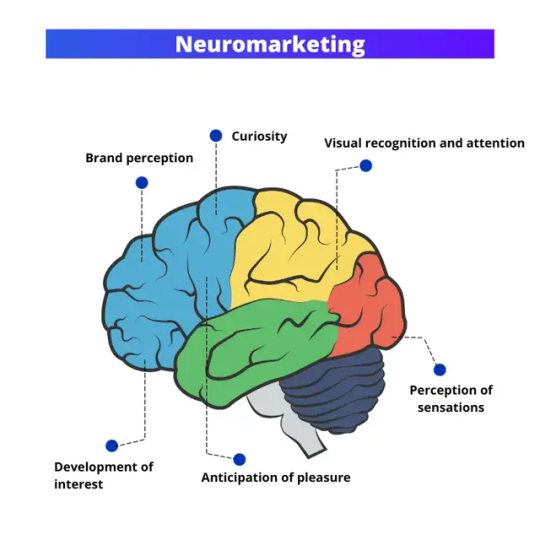
What Is Neuromarketing and Why Does It Matter?
Neuromarketing refers to the application of neuroscience to marketing strategies, focusing on how consumers' brains respond to various stimuli. It uses techniques like EEG (electroencephalography), eye-tracking, and biometric sensors to measure attention, engagement, and emotional reactions.
As attention spans shrink and choices multiply, understanding subconscious decision-making is crucial. Businesses leveraging neuromarketing are better positioned to deliver targeted messaging and UX that converts at scale.
How Neuromarketing Shapes Ad Design in 2025
Advertising is no longer a guessing game. Brands are using neural insights to:
Place CTAs in visually optimal areas
Choose emotionally resonant color schemes
Test reactions to ad elements before launch
This makes digital marketing campaigns smarter and more efficient, allowing businesses to create ads that stick, trigger action, and foster brand loyalty.
The Neuroscience Behind High-Converting Copy
Text is more than just information—it's emotional. Using sentiment analysis, brands can create ad copy that matches their audience’s emotional state. For example, anxious consumers may respond better to reassurance-based messaging, while optimistic users prefer aspirational tones.
By combining neuroscience and content marketing, businesses can strike the perfect emotional chord at each step of the customer journey.
UX and Web Design Backed by Brain Science
In 2025, website design is being reimagined through the lens of cognitive psychology. Eye-tracking and heatmaps show where users look first and where they drop off.
Applying these insights, businesses are:
Reducing cognitive load by decluttering interfaces
Enhancing trust with symmetry and clean navigation
Using familiar patterns for seamless decision-making
These principles not only improve bounce rates but also increase time-on-page, directly impacting SEO and conversion goals.
Emotional Engagement Meets AI
AI tools today don’t just process text—they understand emotions. Integrating Emotion AI with social media marketing campaigns helps brands tailor content based on users’ moods and real-time interactions.
For instance, an AI-powered chatbot can recognize frustration and switch its tone to empathy, improving customer satisfaction and retention.
Neuromarketing’s Role in PPC Strategy
PPC isn't about impressions—it's about reactions. Neuromarketing tools can now analyze how different ad formats influence viewer attention and emotion.
By identifying which visuals or copy variants create stronger neural responses, brands can optimize ads in real-time, reducing cost-per-click while increasing ROI. It’s performance marketing with a psychological twist.
SEO and Neuromarketing: A Cognitive Blend
SEO in 2025 is no longer just about keyword stuffing or backlinks. It's about searcher intent and cognitive flow.
Neuromarketing insights help:
Optimize content readability
Ensure semantic alignment with user expectations
Enhance meta tags and snippets for emotional resonance
This boosts both click-through rates and on-site engagement—essential for winning Google's evolving algorithms.
The Future: Ethical Neuromarketing
With great power comes great responsibility. As digital marketing agencies in Dehradun and beyond embrace brain science, ethical considerations are crucial. Transparency in data collection and consent must be prioritized to build trust.
Ethical neuromarketing means respecting privacy while enhancing experience—a win-win for both brands and consumers.
Conclusion
Neuromarketing is revolutionizing how we understand, engage, and convert audiences in the digital age. Whether it's enhancing UX, optimizing ads, or personalizing content, neuroscience-backed strategies are no longer optional—they're essential. As a leading best digital marketing agency in Dehradun, Graphixio blends brain science with creativity to help your brand thrive in 2025 and beyond.
#digital marketing#seo#marketing#contentmarketing#socialmediamarketing#seo agency#ads#seo marketing#seo company#on page seo
0 notes
Text
Emotion AI and Sentiment-Driven Marketing Campaigns
How Reading Emotions is Powering Personalized Content Delivery
In 2025, marketing is no longer just about reaching the right audience—it's about resonating with them on a deeply personal level. Enter Emotion AI, a game-changing technology that reads emotional cues from text, voice, facial expressions, and online behavior. This technology is revolutionizing how brands personalize messages, creating hyper-relevant experiences that fuel engagement, loyalty, and conversions.
Emotion AI, often referred to as affective computing, enables brands to go beyond demographics and delve into psychographics—understanding how a person feels at a specific moment. With this insight, brands can tailor content marketing and messaging in real-time. It’s a shift from targeting to relating, which is the essence of modern digital marketing.
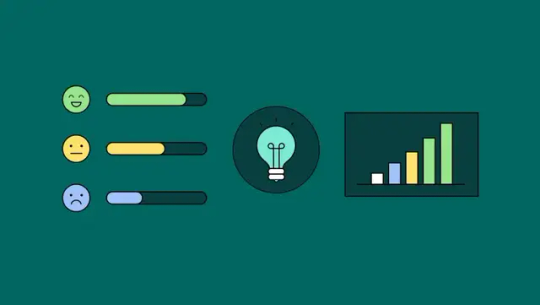
How Emotion AI Works in Marketing
Emotion AI analyzes multiple data sources: facial recognition (through webcams), voice tone (via call center audio), text sentiment (from reviews or social media), and even biometric signals. This data is processed using machine learning models that categorize emotions like happiness, frustration, sadness, or excitement.
Imagine a user scrolling through an ecommerce website—Emotion AI detects if they’re engaged, confused, or excited. Based on this, the site adapts in real-time, showing offers, testimonials, or tutorials tailored to their emotional state. This level of personalization is a leap beyond static targeting.
The Role of Emotion AI in Content Delivery
Emotion AI empowers content marketing strategies by optimizing not only what content is shown but when and how it's delivered. For instance:
If a consumer appears frustrated after multiple searches, Emotion AI can trigger a helpful chatbot or simplified content.
If a user reacts positively to a brand’s story, follow-up content can deepen that emotional connection through longer-form videos or user-generated stories.
This makes content emotionally intelligent, fostering authentic brand-consumer relationships. Leading digital marketing agencies in Dehradun like Graphixio are adopting Emotion AI to drive personalized experiences at scale.
Boosting Campaign Effectiveness with Sentiment Analysis
In social media marketing, sentiment analysis can help brands gauge how their campaigns are being received in real-time. Instead of waiting for a campaign to end, marketers can pivot mid-campaign based on public mood.
For example:
A trending negative reaction to an ad can trigger an immediate switch in messaging.
Positive engagement can inform audience lookalikes and similar content promotions.
Platforms like X (formerly Twitter), Instagram, and TikTok are integrating APIs that support sentiment metrics. PPC campaigns also benefit, allowing advertisers to match ad tone with consumer emotion, improving click-through and conversion rates.
AI-Driven Emotional Segmentation
Traditional segmentation focuses on age, income, or location. Emotion AI adds a powerful layer—emotional segmentation. Brands can now group users based on shared emotional responses, then build creative around those personas.
Let’s say your data shows a group of users who engage most when feeling nostalgic. You can then build campaigns with vintage design elements, retro audio, and throwback storytelling—all tuned to this emotional segment.
This unlocks a new dimension of digital marketing services that connects emotionally, not just transactionally.
Ethical Use of Emotion AI
With great power comes great responsibility. Using emotional data requires strict adherence to transparency and consent. Customers must be informed when their emotional cues are being analyzed.
Leading best digital marketing agencies in Dehradun like Graphixio place ethics at the core of every AI-driven campaign. Consent, data privacy, and non-manipulative messaging are crucial for trust-building in emotionally charged marketing.
Emotion AI: The Future of Real-Time Marketing
The convergence of AI, real-time data, and emotional intelligence signals the next evolution in marketing. Imagine AI-generated video ads that change tone based on your mood, or smart displays in retail stores adapting content as people walk by. This is no longer science fiction—it’s already being piloted by forward-thinking brands.
As voice assistants, smart devices, and connected platforms mature, emotion-aware marketing will become mainstream. Brands that adapt now will be better positioned to capture and retain emotionally-driven consumer loyalty.
Conclusion
Emotion AI is redefining the future of digital marketing. By understanding and reacting to user emotions, brands can deliver not only more effective messages but more meaningful experiences. From content marketing to PPC and social media marketing, Emotion AI is a catalyst for human-centric strategies that build trust, deepen engagement, and drive results.
Graphixio, the best digital marketing agency in Dehradun, integrates Emotion AI into its core offerings—ensuring every campaign is emotionally relevant, ethically designed, and results-driven.
#digital marketing#seo#contentmarketing#socialmediamarketing#marketing#seo agency#seo marketing#on page seo#seo company#ads
0 notes